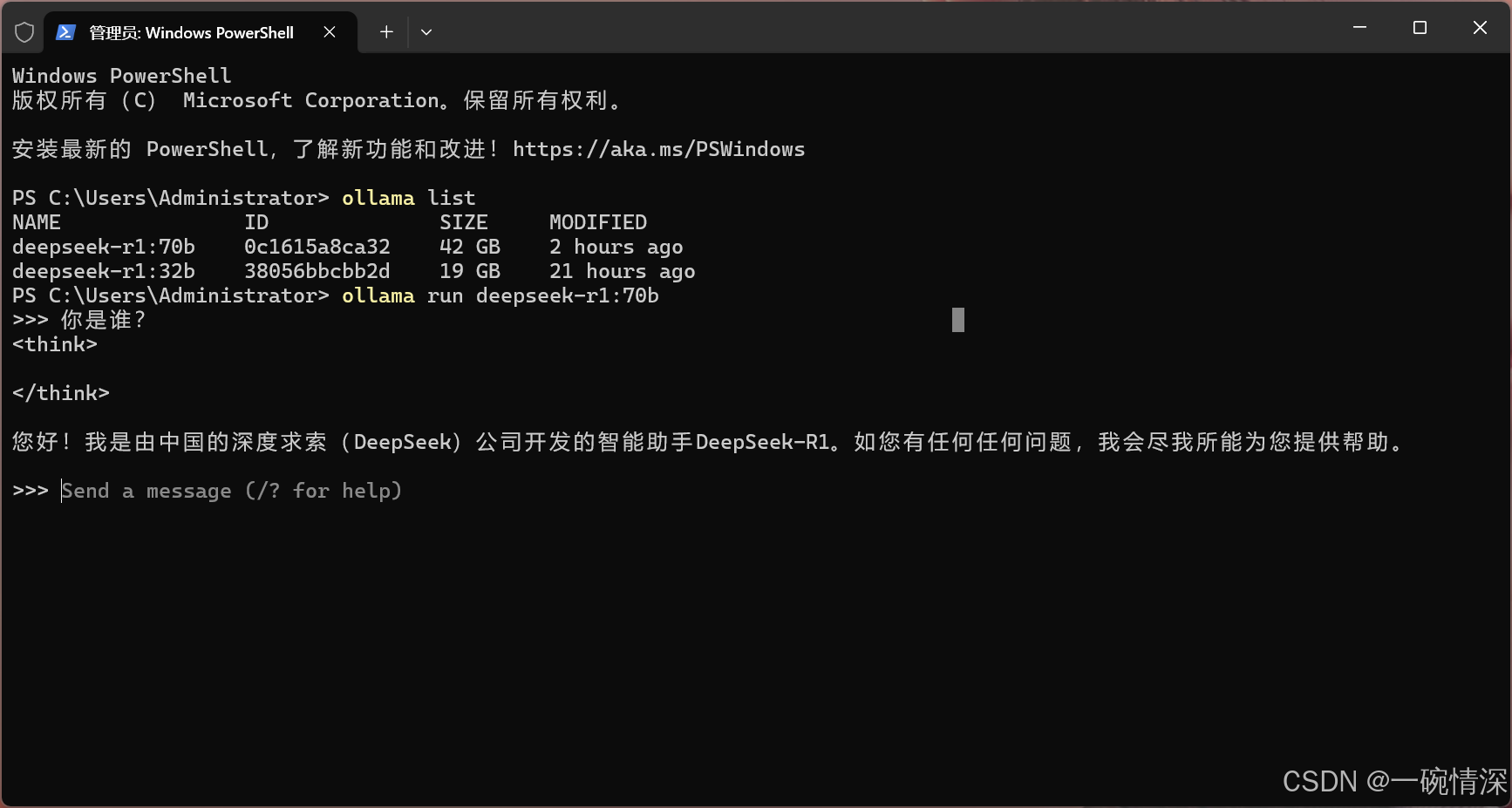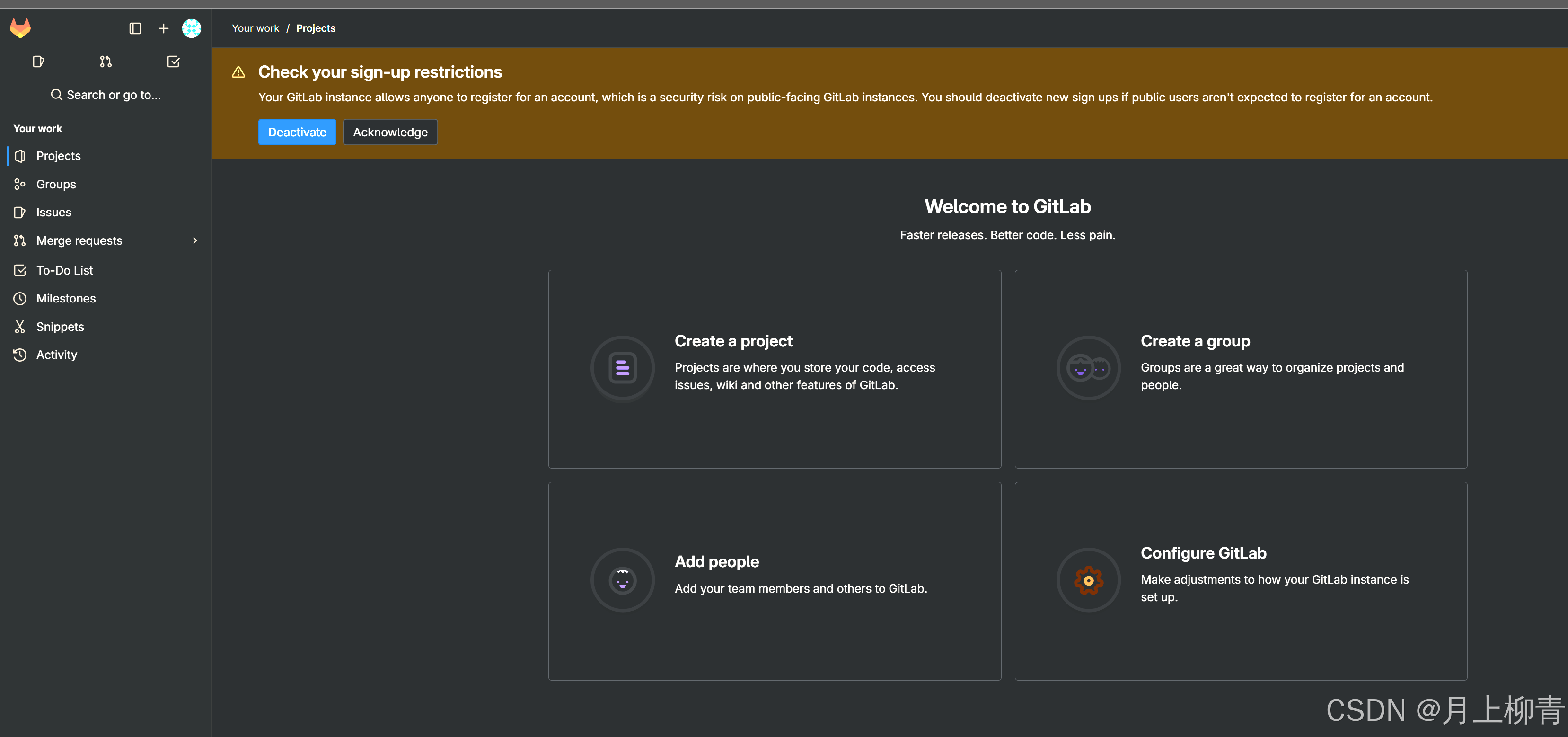

文章目录
- 概念与结构
- 栈
- 队列
- 代码实现
- 栈
- 栈是否为空,取栈顶数据、栈的有效个数
- 队列
- 入队列
- 出队列
- 队列判空,取队头、队尾数据,队列的有效个数
- 算法题解
- 有效的括号
- 用队列实现栈
- 用栈实现队列
- 复用
- 设计循环队列
- 数组结构实现循环队列
- 构造、销毁循环队列
- 判断空和满
- 入、出队列
- 取队头、队尾元素
概念与结构
栈
栈:⼀种特殊的线性表,只允许在固定的⼀端进行插入和删除元素操作。数据插入和删除操作
的一端称为栈顶,另⼀端称为栈底。栈中的元素遵守后进先出(或先进后出)的原则。
压栈(进栈/压栈/⼊栈):插入数据在栈顶。
出栈:在栈顶出数据。
栈的实现可由数组或链表实现,那么哪种是优解呢?
底层用数组:在进栈时只需要在栈顶(尾部)插入数据,不用进行遍历;
底层用链表:在进栈时链表遍历到尾结点再进行插入数据,需要O(n)的时间复杂度,会有一定的消耗。
因此数组的结构实现更优⼀些。

队列
概念:只允许在⼀端插⼊数据,在另⼀端删除数据的特殊线性表,队列具有先进先出(后进后出)的原则。
入队列:在队尾插入数据。
出队列:在队头删除数据。
同样,队列底层也可由数组或链表实现,哪种是优解呢?
底层用数组:删除数据时需要将后面的数据往前挪,有一定的消耗。
底层用链表:出队列时只需要让指向第一个有效结点的指针指向第二个有效结点,不需要遍历;
因此链表的结构实现更优⼀些。

代码实现
栈
栈的底层是数组,和前面在实现顺序表的底层结构是一样的。
typedef int STDataType;typedef struct Stack
{STDataType* arr;int top;//栈顶int capacity;
}ST;
由于栈的初始化、销毁、入栈(顺序表尾插)、出栈(顺序表尾删)功能与顺序表功能实现是一样的,就不过多赘述。
//栈的初始化
void STInit(ST* st)
{assert(st);st->arr = NULL;st->top = st->capacity = 0;
}
//栈的销毁
void STDestroy(ST* st)
{assert(st);if (st->arr){free(st->arr);}st->arr = NULL;st->capacity = st->top = 0;
}
//入栈-->栈顶
void STPush(ST* st, STDataType x)
{assert(st);//检测空间是否不足if (st->capacity == st->top){int NewCapacity = st->capacity == 0 ? 4 : 2 * st->capacity;STDataType* tmp = (STDataType*)realloc(st->arr, NewCapacity * sizeof(STDataType));if (tmp == NULL){perror("realloc fail!");exit(1);}//malloc成功st->arr = tmp;st->capacity = NewCapacity;}st->arr[st->top] = x;st->top++;
}
//出栈帧-->栈顶
void STPop(ST* st)
{assert(st);assert(!STEmpty(st));st->top--;
}
栈是否为空,取栈顶数据、栈的有效个数
栈是否为空,即栈里面是否存在数据,即top是否为0(为0则返回真)。
bool STEmpty(ST* st)
{assert(st);return st->top == 0;
}
取栈顶数据首先得保证栈不为空,其次取top-1的数据即可,栈的有效个数即top。
//取栈顶元素
STDataType STTop(ST* st)
{assert(!STEmpty(st));return st->arr[st->top - 1];
}//获取栈的有效个数
int STSize(ST* st)
{assert(st);return st->top;
}
队列
队列的底层是链表,和前面在实现单链表的底层结构是一样的。
但队列额外定义了指向第一个有效结点的phead指针、指向最后一个有效结点的ptail指针,目的是减少入队列的消耗(不用遍历链表)。

这里多定义的size变量是为了记录队列的有效个数。
typedef int QDataType;
//定义队列结点的结构
typedef struct QueueNode
{QDataType data;struct QueueNode* next;
}QueueNode;
//定义队列的结构
typedef struct Queue
{QueueNode* phead;//队头QueueNode* ptail;//队尾int size;
}Queue;
入队列
需要往队尾插入数据,必然涉及申请新节点 --> 在单链表中实现过。
- 链表为空,phead和ptail指向申请的新结点;
- 链表不为空,ptail指向新结点并成为新结点,并让size++。

//往队尾插入数据
void QueuePush(Queue* pq, QDataType x)
{assert(pq);//malloc一个新节点QueueNode* newnode = (QueueNode*)malloc(sizeof(QueueNode));if (newnode == NULL){perror("malloc: fail");exit(1);}//malloc成功newnode->data = x;newnode->next = NULL;//判断链表是否为空if (pq->phead == NULL){//链表为空pq->phead = pq->ptail = newnode;}else{pq->ptail->next = newnode;pq->ptail = pq->ptail->next;}pq->size++;
}
出队列
- 当只存在一个结点时,释放后phead和ptail指向为NULL;
- 释放尾结点,让ptail指向上一个结点。

//队头删除数据
void QueuePop(Queue* pq)
{assert(pq);assert(!QueueEmpty(pq));//只有一个节点if (pq->phead == pq->ptail){free(pq->phead);pq->phead = pq->ptail = NULL;}else {QueueNode* next = pq->phead->next;free(pq->phead);pq->phead = next;}pq->size--;
}
队列判空,取队头、队尾数据,队列的有效个数
//队列判空
bool QueueEmpty(Queue* pq)
{assert(pq);return pq->phead == NULL;
}//取队头数据
QDataType QueueFront(Queue* pq)
{assert(pq);assert(!QueueEmpty(pq));return pq->phead->data;
}//取队尾数据
QDataType QueueBack(Queue* pq)
{assert(pq);assert(!QueueEmpty(pq));return pq->ptail->data;
}//队列有效元素个数
int QueueSize(Queue* pq)
{assert(pq);return pq->size;
}
算法题解
掌握了栈和队列这两种数据结构后,重点在于算法题上的解答,下面通过四种题型领略栈和队列的魅力。
有效的括号
题型 --> 有效的括号

根据题目需求判断字符串是否有效,但还存在一些特殊情况如上图所示。那这题思路该从哪里入手呢?用栈的方法实现。
- 将s从头开始遍历直到结束,若遍历过程遇到 ‘(’ ‘{’ ‘[’ 则入栈st;
- 若遇到 ‘)’ ‘}’ ‘]’ 时则取栈顶比较(前提是栈不为空);
- 遍历结束后,需判断栈是否为空,因为若是有效的字符串则栈应为空(如上图特殊处理1)。

bool isValid(char* s) {ST st;STInit(&st);char* pi=s;while(*pi!='\0'){if(*pi=='('||*pi=='{'||*pi=='['){//入栈STPush(&st,*pi);}else{//取栈顶,判断if(STEmpty(&st)){return false;}//不为空char top=STTop(&st);if((top=='('&&*pi!=')')||(top=='{'&&*pi!='}')||(top=='['&&*pi!=']')){return false;}STPop(&st);}pi++;}bool ret=STEmpty(&st)?true:false;STDestroy(&st);return ret;
}
用队列实现栈
题型 --> 用队列实现栈


typedef struct {Queue q1;Queue q2;
} MyStack;//初始化
MyStack* myStackCreate() {MyStack* ret=(MyStack*)malloc(sizeof(MyStack));QueueInit(&ret->q1);QueueInit(&ret->q2);return ret;
}//往不为空的队列插入数据
void myStackPush(MyStack* obj, int x) {if(!QueueEmpty(&obj->q1)){QueuePush(&obj->q1,x);}else{QueuePush(&obj->q2,x);}
}int myStackPop(MyStack* obj) {//找空队列和非空队列Queue* emp=&obj->q1;Queue* Unemp=&obj->q2;if(QueueEmpty(&obj->q2)){emp=&obj->q2;Unemp=&obj->q1;}while(QueueSize(Unemp)>1){QueuePush(emp,QueueFront(Unemp));QueuePop(Unemp);}int top=QueueFront(Unemp);QueuePop(Unemp);return top;
}//把不为空队列的队尾元素返回
int myStackTop(MyStack* obj) {if(!QueueEmpty(&obj->q1)){return QueueBack(&obj->q1);}else{return QueueBack(&obj->q2);}
}bool myStackEmpty(MyStack* obj) {return QueueEmpty(&obj->q1)&&QueueEmpty(&obj->q2);
}void myStackFree(MyStack* obj) {QueueDestroy(&obj->q1);QueueDestroy(&obj->q2);free(obj);obj=NULL;
}
用栈实现队列
题型 --> 用栈实现队列

将STPush栈里的数据全部导入到STPop栈里,并删除STPop栈顶元素。

typedef struct {ST pushST;ST popST;
} MyQueue;MyQueue* myQueueCreate() {MyQueue* obj=(MyQueue*)malloc(sizeof(MyQueue));STInit(&obj->pushST);STInit(&obj->popST);return obj;
}void myQueuePush(MyQueue* obj, int x) {STPush(&obj->pushST,x);
}int myQueuePop(MyQueue* obj) {if(STEmpty(&obj->popST)){//把pushST中的数据导到popST中来while(!STEmpty(&obj->pushST)){STPush(&obj->popST,STTop(&obj->pushST));STPop(&obj->pushST);}}int top=STTop(&obj->popST);STPop(&obj->popST);return top;
}int myQueuePeek(MyQueue* obj) {if(STEmpty(&obj->popST)){//把pushST中的数据导到popST中来while(!STEmpty(&obj->pushST)){STPush(&obj->popST,STTop(&obj->pushST));STPop(&obj->pushST);}}int top=STTop(&obj->popST);return top;
}bool myQueueEmpty(MyQueue* obj) {return STEmpty(&obj->pushST)&&STEmpty(&obj->popST);
}void myQueueFree(MyQueue* obj) {STDestroy(&obj->pushST);STDestroy(&obj->popST);free(obj);obj=NULL;
}
复用
由于出队列和取队尾数据的代码相似度极高,因此我们可以用复用的方法使代码更简洁,增强代码可维护性。

设计循环队列
题型 --> 设计循环队列

1.若底层用链表的结构来实现,则会出现如下情况1和2出现矛盾,此时又该怎样判断循环队列是否为空呢?
因此,底层用链表的结构来实现很难行得通。

数组结构实现循环队列
如果按题目需要多少空间就开多少空间,此时会循环队列空和满的情况下,front和rear的下标都指向同一下标,那该如何判断循环队列是空还是满呢?

解决方案:给数组多开一块空间

构造、销毁循环队列
typedef struct {int* arr;int front;int rear;int capacity;
} MyCircularQueue;MyCircularQueue* myCircularQueueCreate(int k) {MyCircularQueue* pq=(MyCircularQueue*)malloc(sizeof(MyCircularQueue));if(pq==NULL){exit(1);}if(pq->arr==NULL){exit(1);}pq->arr=(int*)malloc(sizeof(int)*(k+1));pq->front=pq->rear=0;pq->capacity=k;return pq;
}
判断空和满
bool myCircularQueueIsEmpty(MyCircularQueue* obj) {return obj->front==obj->rear;
}bool myCircularQueueIsFull(MyCircularQueue* obj) {return (obj->rear+1)%(obj->capacity+1)==obj->front;
}
入、出队列
入队列和出队列的时候会出现特例情况,即front和rear是否会越界。

bool myCircularQueueEnQueue(MyCircularQueue* obj, int value) {if(myCircularQueueIsFull(obj)){return false;}obj->arr[obj->rear++]=value;obj->rear%=obj->capacity+1;return true;
}bool myCircularQueueDeQueue(MyCircularQueue* obj) {if(myCircularQueueIsEmpty(obj)){return false;}obj->front++;obj->front%=obj->capacity+1;return true;
}
取队头、队尾元素
取队尾元素时,一般返回rear-1下标位置的元素即可。但此题是一个循环队列,因此存在特殊情况需要处理。
int myCircularQueueRear(MyCircularQueue* obj) {if(myCircularQueueIsEmpty(obj)){return -1;}return obj->arr[obj->rear-1];
}
特例情况:若rear–则为-1,取不到队尾元素。

int myCircularQueueFront(MyCircularQueue* obj) {if(myCircularQueueIsEmpty(obj)){return -1;}return obj->arr[obj->front];
}int myCircularQueueRear(MyCircularQueue* obj) {if(myCircularQueueIsEmpty(obj)){return -1;}int prev=obj->rear-1;if(obj->rear==0){prev=obj->capacity;}return obj->arr[prev];
}



















![python算法和数据结构刷题[1]:数组、矩阵、字符串](https://i-blog.csdnimg.cn/direct/21f81f3f38af47ada982711451fcbe9f.png)

